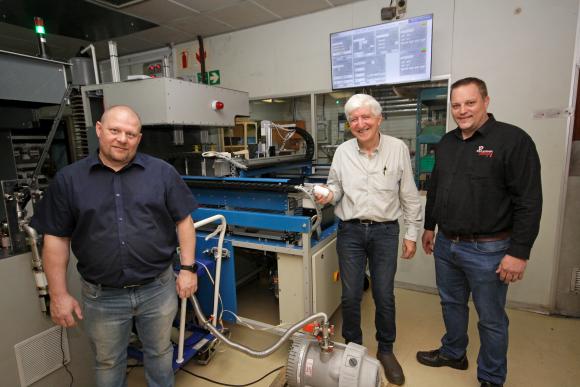MV Switchgear recently completed the establishment of an automated vacuum interrupter (VI) testing facility in the VI manufacturing plant at its Knights, Germiston, factory.
The automated test facility, which was completed in September this year and commenced operation at the beginning of October, has been established to test the VI’s that are being manufactured by the division for a US switchgear company that has launched the new product into the US market.
MV Switchgear undertook in the partnership agreement, signed in early-2020, to expand the production capacity and develop the manufacturing and testing capabilities of its VI plant to enable it to produce the US company’s VI’s in accordance with its specific requirements.

The division is committed to manufacturing up to 20 000 of the US company’s VI’s per year. The product differs substantially from the VI’s that MV Switchgear manufactures in the VI plant for its own switchgear equipment, as it has, among other differences, a higher voltage rating, more stringent tolerance requirements and is more compact than the local product.
“The volume of VI’s we are manufacturing for our US partner is significantly larger than the numbers we produce for our own switchgear. It was therefore essential that an automated testing facility be established in the plant to keep pace with the output of the new product,” said Rhett Kelly, MV Switchgear’s Design & Development Manager.
The division contracted a reputable local automation specialist, who had earlier assisted with the integration of the newly refurbished braze furnace control systems, to build a customised automated testing system to meet these requirements.
“There are four types of tests that have to be done on each new VI produced. The system consists of automated test stations for each of the test procedures, plus moveable trollies that can be plugged into each of the test stations respectively. Each trolly is equipped with a robotic arm and contains a tray holding 150 VI’s for testing.
The robotic arm is programmed to pick up each VI in turn, read the QR code to capture the serial number and insert it into the test station, where it is tested. It then picks it up and places it back in the tray, “ Rhett explained, adding that the robotic arms and test procedures are all centrally controlled by a SCADA system, which also automatically records and logs the test results.
“The trays have to be loaded and the trollies moved into position and plugged into the test station bays manually. But once the test procedures get under way it is a fully-automated process from start to finish, with the different types of tests being able to be conducted simultaneously on the VI’s.
“The testing process occurs without any human intervention. So, for example, at the end of the production day the tests may be started and left to independently complete themselves overnight,” Rhett pointed out.
The trays for the VI’s are stored in a special cabinet with environmental controls including air purification units to protect the VI’s from contamination between tests.
The different types of tests are:
- High voltage conditioning of the contacts,
- Pressure measurement using a magnetron,
- Electrical contact resistance measurement, and
- Power frequency withstand test, combined with an X-ray test.
In addition to the functions performed by the robotic arms as described above, they are programmed to adjust the contact gap of the VI’s for three of the abovementioned tests, as different contact gaps apply for these tests.
“The control system for the robotic arms is also programmed to enable the robots to continue from where they left off in the testing process when the power is restored after any power interruptions, including load-shedding,” commented Johan Jordaan, MV Switchgear’s Technology Development Specialist.
